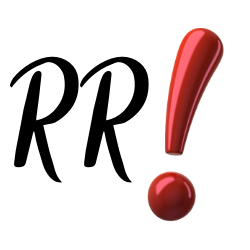Taking Responsible Risks – a key to new learning
Being able to take a risk is central to being able to be a learner in a classroom. Learning requires students to move from their comfort zone, the known, into the growth zone or the unknown. Yet for many this can be a scary prospect.
In their extensive research, Prof. Art Costa and Dr Bena Kallick identified the ability to take a responsible risk as one of their 16 Habits of Mind or dispositions of successful people. They state that when the answer is not immediately apparent and when problem solving, successful people take educated guesses which draw on their past knowledge. They go on to say. “People who take responsible risks are thoughtful about consequences and have a well-trained sense of what is appropriate.”
They give new challenges a go, volunteer for the unknown and are often unconventional in their thinking and actions. Risk takers ask themselves questions such as, “Can I do it? Am I prepared?” or tell themselves “I’ll try.” They feel a sense of reward and satisfaction from achieving something that is potentially scary or unknown. As Susan Jeffers says, “They feel the fear and do it anyway.” They are willing to go beyond established limits. Accepting confusions and uncertainty and the risk of failure is part of the process.
There are two types of risk taking. The first is being willing to venture out into something new. This is accompanied with research, past knowledge and calculation. The second is about adventure. Being spontaneous and the willingness to take a chance.
I personally believe our current education system, and arguably most education systems, diminish students ability to take risks.
 Consider this… Go into a pre-primary or Year 1 classroom and those kids just want to learn. The teacher only has to ask, “Who wants…?” “How many…?” and hands pop up and wave with enthusiasm all over the classroom. They are eager to learn and participate. However, contrast this with a typical secondary classroom. When the teacher asks a question, heads and eyes go down. Students don’t want to fail, look stupid, be wrong or risk rejection or embarrassment. This holding back often means missed opportunities, friendships and new learning.
Consider this… Go into a pre-primary or Year 1 classroom and those kids just want to learn. The teacher only has to ask, “Who wants…?” “How many…?” and hands pop up and wave with enthusiasm all over the classroom. They are eager to learn and participate. However, contrast this with a typical secondary classroom. When the teacher asks a question, heads and eyes go down. Students don’t want to fail, look stupid, be wrong or risk rejection or embarrassment. This holding back often means missed opportunities, friendships and new learning.
What happens to the very behaviour we want in the classroom? The ability to give it a go, try, make mistakes and learn from them.
Part of the solution is to establish a safe classroom environment. One where it is OK to make mistakes and where they are celebrated. Creating an environment where every student is valued, no matter what their response. It requires a teacher to be predictable in their actions, to praise the effort rather than the results and avoid put downs and sarcasm.
Here are a few ideas you might like to implement to encourage more responsible risk taking in your classroom.
Use wait time
 Mary Budd Rowe’s research showed that the average wait time a teacher gives after asking a question is 1 second. This is not enough time for the higher order critical, creative, analytical or divergent thinking to occur. It is enough time for lower order thinking such as recall. Students who are fast processors can recall facts and information with speed and are often perceived as ‘more intelligent’ causing others to stop trying to answer so quickly. Instead use Wait Time. When you ask a question, give students between 7-10 seconds to think about their response. Using Wait time or a Think Pair Share strategy to give students time to consider and chat through options or alternatives can lower the risk factor of being wrong or the embarrassment of not knowing when suddenly called upon.
Mary Budd Rowe’s research showed that the average wait time a teacher gives after asking a question is 1 second. This is not enough time for the higher order critical, creative, analytical or divergent thinking to occur. It is enough time for lower order thinking such as recall. Students who are fast processors can recall facts and information with speed and are often perceived as ‘more intelligent’ causing others to stop trying to answer so quickly. Instead use Wait Time. When you ask a question, give students between 7-10 seconds to think about their response. Using Wait time or a Think Pair Share strategy to give students time to consider and chat through options or alternatives can lower the risk factor of being wrong or the embarrassment of not knowing when suddenly called upon.
Celebrate Mistakes
Create an environment where mistakes are not only encouraged, they are celebrated. Making mistakes is a fundamental part of the learning process (think learning to walk, talk and ride a bike.) Talk to your students about how their brain learns. I relabelled the word mistake to ‘Learning Experience’ in my classroom. I would hear students saying, “I just had a learning experience.” Or “Look! You’re have a learning experience there.” This is a very different culture to seeing students cringe over making a mistake.
“Are you sure?”
Your students are watching and listening to you for cues to see if they are on the right track and if they are correct. Often a teacher says, “Are you sure?” when the student is incorrect. It is rare to be asked this question when a student is correct. Practice asking students this question when they are correct to help them reflect on their choices so they are not always looking at you for the cues to whether they are correct or not.
Stop judging
Teachers often diminish the behaviour of participation in the classroom by making a judgement on a student’s contribution. When teachers ask for ideas, thoughts and sharing from students, it is common practice to give them some form of positive acknowledgement. Words such as good, nice, wow, awesome, fantastic, amazing, etc are common appraising assurances. Look below the surface, from a child’s perspective, and you’ll see those words are not weighted equally. Why did one child receive good while another got awesome? As a teacher you have inadvertently placed a judgement on the contribution from the student. This causes the fear of failure, risk factor to go up. Students start to believe their contribution is not as ‘good’ as another’s and therefore decreases their willingness to take a responsible risk in front of their peers.
Instead of judging, reward the behaviour you want to increase which is the ability to take a responsible risk and share in front of others. What we want is to increase participation. I use the two words, ‘thank you.’ I am thanking students for their participation and not judging the quality of their offering.
Look at your walls
If you truly value mistake making, have a look at your classroom walls. Do they display learning or just the finished product? Do students think learning is about ‘getting it right’ or know it is the process of mistakes, re-runs and effort that is important. If you only display the ‘best’ work and students feel they cannot meet the mark, their ability to take a risk may be curtailed. Do they only hand in the finished product or do you want to see the drafts showing the learning, mistakes and polishing. Often students do not want teachers to see they have made a mistake. Encourage the whole learning process by showcasing on your walls and allowing students to hand in their drafts to show their progress.
RR
 To encourage students to take a risk and try something new, invite them to write ‘RR’ in the margin when they are not sure of what they are doing. When tackling a maths problem they are not sure of, write RR in margin as a secret signal to the teacher saying, “I’m not sure what I am doing here and I’m giving it a go.” Taking an RR- Responsible Risk. When spelling a word they are not sure of – write RR in the margin. There are many applications for this. Essentially, this strategy gives students permission not to know and to give something new a go.
To encourage students to take a risk and try something new, invite them to write ‘RR’ in the margin when they are not sure of what they are doing. When tackling a maths problem they are not sure of, write RR in margin as a secret signal to the teacher saying, “I’m not sure what I am doing here and I’m giving it a go.” Taking an RR- Responsible Risk. When spelling a word they are not sure of – write RR in the margin. There are many applications for this. Essentially, this strategy gives students permission not to know and to give something new a go.
In what ways might you encourage more responsible risk taking in your classroom?
Tags: Habits of Mind, HOM, Karen Boyes, Karen Tui Boyes, learning, Risk Taking, wait time
Published on Monday, October 12th, 2020, under Habits of Mind, Learning, Teacher Effectiveness
